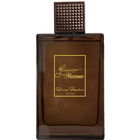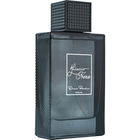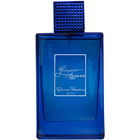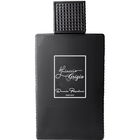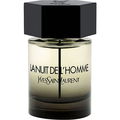Faithful to the old “Eau Noble” by Paul Vacher from 1972, which at the time of its introduction did not stand out for its innovative spirit, it nevertheless scored points with sophistication and a fragrant nobility that remained committed to a tradition of classic Eau de Colognes such as Guerlain's “Eau de Cologne Impériale” and “Eau de Cologne du Coq,” as well as their evolution into fresh, lightly aromatic Chypres like Givenchy's “Monsieur,” Chanel's “Pour Monsieur,” Dior's “Eau Fraiche,” and “Eau Sauvage.”
That one could indeed give this long-established genre a modern touch at the time is exemplified by fragrances like Yves Saint Laurent's “Pour Homme” a year earlier and Loewe's “Para Hombre” two years later. “Eau Noble,” on the other hand, held back with dignity: no animalistic stench, no overtly harsh aromas, no, just pure cultivation. In light of the joyful spirit of experimentation of that decade, questioning everything and pushing forward with vigor, Le Galion offered with “Eau Noble” rather sleepy, albeit sublime, perfumery.
Fifty years later, the now revived house of Le Galion apparently felt the need to finally make up for this supposed shortcoming of lack of innovation and presents us with a completely modernized version, crafted by the renowned perfumer Rodrigo Flores-Roux, who has already enriched the house's portfolio with such outstanding contributions as “Cologne,” “Cologne Nocturne,” “Bourrasque,” “L’Âme Perdue,” and “Jasmin.”
The current Le Galion team describes Paul Vacher's work with the following words:
“In the early 70s, the world was changing, the counterculture was being celebrated, and perfume became more accessible. A fresh wind was blowing over France and into perfumery. Traditional formality gave way to youthful energy, and outdated bourgeois notions were thrown overboard by young, freedom-hungry students.
Eau Noble embodies these two mentalities. The name itself refers to a prestigious heritage, while the unisex fragrance heralds a radiant future. A bold legacy.
A perfume that is just as relevant today as it was yesterday.”
Quite a load of nonsense, I think. If it is still as relevant today as it was yesterday, then why this update?
To this, Flores-Roux says:
“When reworking Eau Noble, I wanted to capture the energy and momentum of life that characterized the early 70s. The wave of intense, modern woody notes evokes movement and forward thrust. To accentuate these notes, I tried to create an electrifying and fluorescent 'Technicolor' strawberry-rhubarb accord. Patchouli, cedarwood, and cypress give the fragrance depth and elegance, while mastic resin, pine, and labdanum appropriately reflect the sensuality of that time.”
Hm, well.
Honestly, I perceive the result somewhat differently, and to put it succinctly: the fragrance presents itself primarily as a modernist remake of a truly groundbreaking 70s icon, namely “Azzaro pour Homme.”
Not that the two fragrances are particularly similar, no, but somehow the idea struck me that this classic of the fougère genre was chosen as the starting point for the new Eau Noble fragrance concept: simply swap out the aromatic complex of the Azzaro fragrance for a modern sour-fruity rhubarb accord, accentuate the green and woody facets with a more contemporary makeup, and dim down the fougère elements a bit - et voilà, the new “Eau Noble” is not so far off!
What does this have to do with the old “Eau Noble”?
Nothing at all.
The new “Eau Noble” doesn’t even attempt to quote the old one and for this reason also reminds me of another 'rebirth,' that of “Patou pour Homme.”
Both new creations of the same name are not bad per se, but they achieve neither the grandeur of one nor the nobility of the other. On the contrary: in the attempt at a contemporary reinterpretation, one has, whether intentionally or not, succumbed to mediocrity and shallowness, terms that are simply forbidden for the original works.
Perhaps I have become too old, too attached to the old warhorses, to endure them stripped of their dignity and dressed in hip attire.
Why not simply give these 'rebirths' different names?
The new “Eau Noble” is not 'noble' at all, while the old one certainly is, and how! Just like the exceedingly successful perfume version “Essence Noble.” But the new “Eau Noble” - nada. Nobility is lost, completely.
It represents my not only olfactory but also musically and architecturally highly valued 70s just as little as Dior's “Sauvage” can capture the spirit and sophistication of the 60s icon “Eau Sauvage” (another disastrous name theft!).
One thing I must admit, though: even if I have smelled rhubarb more convincingly fragrant (“Rhubarb my Love” by The Zoo and “Sept.21.1966” by Rundholz!) - the bottle is simply genius! Pierre Dinand has designed it again and created a beautiful interpretation of his work from half a century ago - Bravo!!
Perhaps it would be better to pack the old “Eau Noble” along with its perfume version into this beautiful piece and give the new “Eau Noble” a reset under another name, perhaps filled into the cylindrical bottles of the entire Le Galion range, which are also quite nice.
Wouldn’t that be an idea, Monsieur Chabot?






 Top Notes
Top Notes  Blood orange
Blood orange Rhubarb
Rhubarb Reseda
Reseda Mastic
Mastic Drukfenzol
Drukfenzol Heart Notes
Heart Notes  Egyptian geranium
Egyptian geranium Indian ginger
Indian ginger Pine needle
Pine needle Sandalwood
Sandalwood Base Notes
Base Notes  Atlas cedar
Atlas cedar Cypress
Cypress Labdanum
Labdanum Patchouli
Patchouli

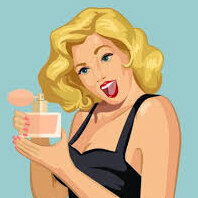

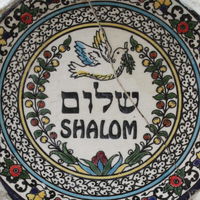

 Yatagan
Yatagan SchatzSucher
SchatzSucher Ergoproxy
Ergoproxy Gold
Gold Serenissima
Serenissima Heikeso
Heikeso Baneling
Baneling Gelis
Gelis Midnights
Midnights Marquis
Marquis